

| Region rejsu : Północna Europa, Europa |
| Firma : Celebrity Cruises |
| Statek : Celebrity Apex |
| Data rozpoczęcia : pt. 29 maj 2026 |
| Data zakończenia : sob. 06 cze 2026 |
| Liczba nocy : 8 nocy |
| Dzień | Data | Port | Wypłynięcie | Odpłynięcie |
|---|---|---|---|---|
| 1 | 29.05 pt. | Southampton / Wielka Brytania | 16:00 | |
| 2 | 30.05 sob. | Dzień na morzu / Morze | ||
| 3 | 31.05 niedz. | Vigo / Hiszpania | 09:00 | 17:00 |
| 4 | 1.06 pon. | Lizbona / Portugalia | 08:00 | 18:00 |
| 5 | 2.06 wt. | Porto / Portugalia | 08:00 | 18:00 |
| 6 | 3.06 śr. | La Coruna / Hiszpania | 08:00 | 17:00 |
| 7 | 4.06 czw. | Bilbao / Hiszpania | 09:00 | 17:00 |
| 8 | 5.06 pt. | Dzień na morzu / Morze | ||
| 9 | 6.06 sob. | Southampton / Wielka Brytania | 06:30 |
Zakwaterowanie w kabinie wybranej kategorii;
Posiłki w ramach all inclusive (z wyjątkiem alternatywnych restauracji);
Napoje: woda, herbata, kawa w punktach samoobsługowych na statku;
Wszystkie publiczne rozrywki na pokładzie (wieczorne pokazy, kluby nocne, muzyka na żywo itp.);
Udział dzieci w klubach dziecięcych;
Korzystanie z basenów i jacuzzi;
Siłownia, boisko sportowe, zajęcia grupowe;
Obsługa kabin;
Opłaty portowe, podatki i opłaty;
W przypadku kategorii kabin (apartamentów) typu Retreat – Ultra all inclusive:
Wszystkie powyższe usługi są wliczone w cenę;
Szlafroki do użytku na pokładzie;
Pakiet napojów premium;
Premium Wi-Fi.
Dodatkowo płatne:
przelot;
transfery;
wizy na trasie;
hotel przed i po rejsie (w razie potrzeby);
napiwki dla personelu*;
alternatywne restauracje;
napoje alkoholowe i niektóre napoje bezalkoholowe;
Internet i telefon na pokładzie;
kasyno na pokładzie;
usługi pralnicze/czyszczenie chemiczne;
salon kosmetyczny, centrum SPA;
wycieczki po portach (opcjonalnie).
*Wysokość napiwku zależy od wybranej kategorii kabiny:
(kabina wewnętrzna, z oknem, z balkonem, Infinity Veranda) kosztuje 18,00 USD za osobę dziennie,
w przypadku kabin Concierge i AquaClass – 18,50 USD za osobę dziennie,
a w przypadku apartamentów – 23,00 USD za osobę dziennie.
Koszt napiwku jest automatycznie doliczany do faktury końcowej. Jeśli zapłacisz napiwek z góry podczas rezerwacji rejsu, nie zostanie on uwzględniony na rachunku końcowym.
PAKIETY NAPOJOWE CELEBRITY CRUISES
Dostępne są zarówno alkoholowe, jak i bezalkoholowe pakiety rejsowe, które zaspokoją każdy gust.
Nowy pakiet All Inclusive zawiera Klasyczny Pakiet Napojów, który pozwala cieszyć się nielimitowaną ilością wody, piwa, koktajli, mrożonych napojów i win lane do 10 dolarów za porcję. Klasyczny Pakiet Napojów obejmuje również 15% zniżki na wszystkie butelki wina.
Pakiety Napojów Premium obejmują wszystkie opcje dostępne w Klasycznych Pakietach Napojów, a także kawę premium, świeże soki, soki butelkowane i puszkowane, San Pellegrino, Red Bull, wodę witaminową, mrożoną herbatę Fair Trade, piwo rzemieślnicze i rzemieślnicze, likiery premium, Coca-Colę, wodę butelkowaną premium, wina lane do 17 dolarów oraz 20% zniżki na wino butelkowane.
Pakiet Klasyczny
W ramach Pakietu Klasycznego możesz wybierać spośród niesamowitej oferty piw, alkoholi, koktajli, likierów, mrożonych napojów i win lane w cenie do 10 USD za porcję. Otrzymasz również 15% zniżki na wszystkie wina butelkowane. Cena Pakietu Klasycznego zaczyna się od 89 USD za dzień.
Pakiet Premium
Już od 109 USD za dzień, Pakiet Premium obejmuje autorskie kawy i herbaty, piwa rzemieślnicze i rzemieślnicze, alkohole, koktajle, mrożone napoje, produkty Coca-Coli, wodę butelkowaną premium oraz wina na kieliszki do 17 USD za porcję. Otrzymasz również 20% zniżki na wszystkie wina butelkowane.
*Należy wybrać pakiet All Inclusive, który obejmuje Klasyczny Pakiet Napojów, Podstawowy Pakiet Internetowy oraz napiwki i obowiązuje w kabinach AquaClass®, z wyjątkiem Galapagos. Wszyscy goście w kabinie muszą wybrać ten sam pakiet cenowy.
Pakiet Napojów Zero Proof
Pakiet Napojów Zero Proof kosztuje 30 USD za dzień. Pakiet ten obejmuje wszystkie niezbędne rzeczy, takie jak świeżo wyciskane soki, kawę i herbatę premium oraz wodę butelkowaną.
W zależności od terminu rejsu, aby potwierdzić kabinę, należy dokonać płatności zgodnie z harmonogramem.
Po dokonaniu przedpłaty, kierownik potwierdza zgłoszenie w systemie rejsowym.
Zaliczka (przedpłata)
Czas trwania rejsu 1-5 nocy - 100 USD/osoba
6 lub więcej nocy - 450 USD/osoba
Płatność całości najpóźniej na 60 dni przed rozpoczęciem rejsu
Płatność całości (rejsy w okresie 24-31 grudnia) najpóźniej na 90 dni przed rozpoczęciem rejsu
Standardowe kary dla rejsów Celebrity
Okres anulowania
Zasady anulowania
90-61 dni przed przyjazdem
1-5 nocy 35 USD/osoba
6 nocy lub więcej 70 USD/osoba
60–46 dni przed przyjazdem w wysokości zaliczki
45–31 dni przed przyjazdem 25% całkowitego kosztu rejsu, nie mniej niż zaliczka
30–15 dni przed przyjazdem 50% całkowitego kosztu rejsu, nie mniej niż zaliczka
14 dni przed przyjazdem/nieobecność na pokładzie 100% kosztu rejsu
Kary za rejsy noworoczne Celebrity (24–31 grudnia)
Okres, w którym nastąpiło anulowanie Warunki anulowania
90-61 dni przed przyjazdem W wysokości zaliczki
60-46 dni przed przyjazdem 25% całkowitego kosztu rejsu, nie mniej niż kwota zaliczki
50% całkowitego kosztu rejsu, nie mniej niż kwota zaliczki
45-31 dni przed przyjazdem 50% całkowitego kosztu rejsu, nie mniej niż kwota zaliczki
30-15 dni przed przyjazdem 75% całkowitego kosztu rejsu, ale nie mniej niż kwota zaliczki
14 dni przed przyjazdem/nieobecność na pokładzie 100% kosztu rejsu
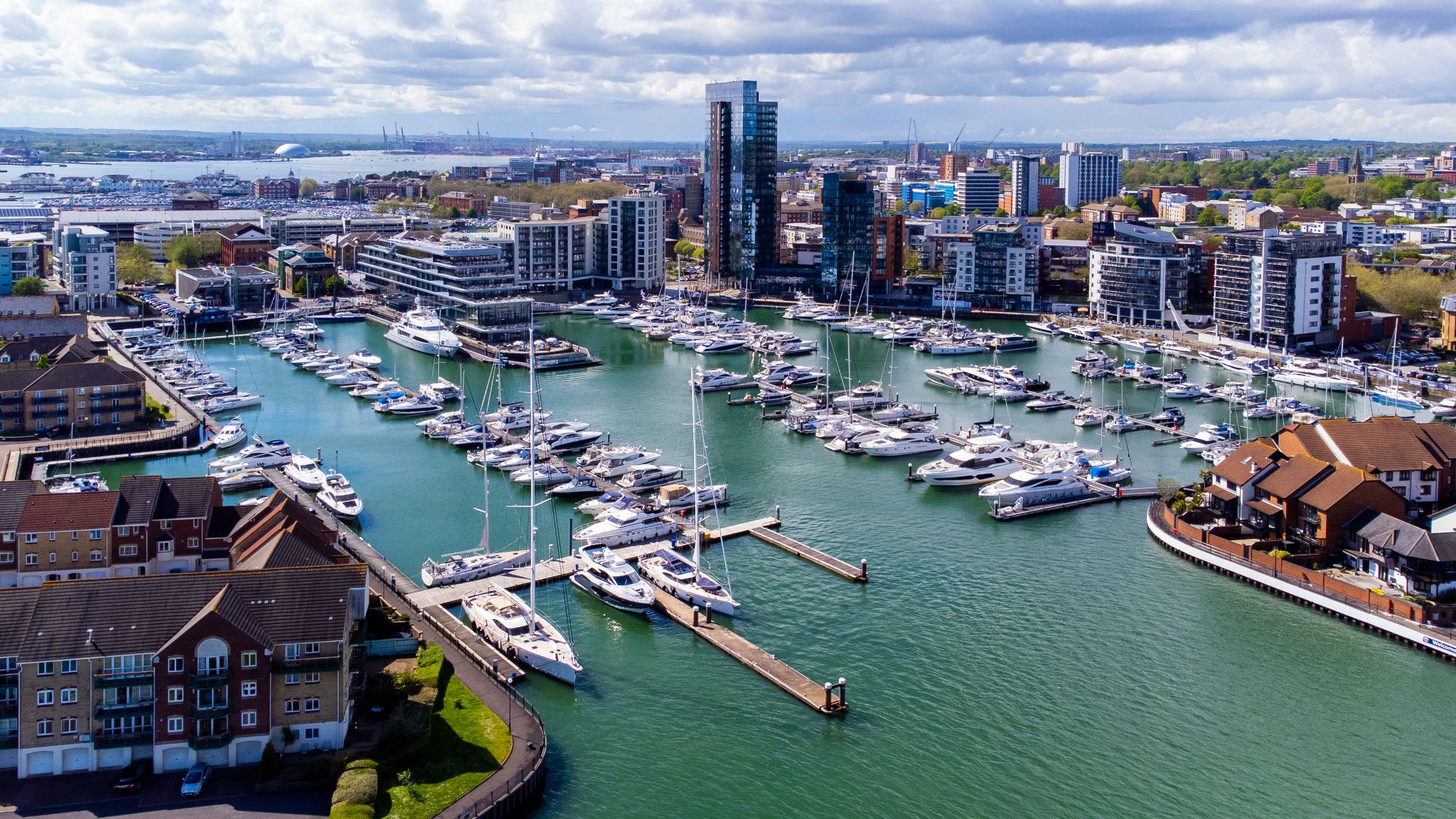
Southampton is the largest city in the ceremonial county of Hampshire, England. It is 69 miles (111 km) south-west of London and 15 miles (24 km) west north-west of Portsmouth. Southampton is a major port and the closest city to the New Forest. It lies at the northernmost point of Southampton Water at the confluence of the Rivers Test and Itchen, with the River Hamble joining to the south of the urban area. The city, which is a unitary authority, has an estimated population of 253,651. The city's name is sometimes abbreviated in writing to "So'ton" or "Soton", and a resident of Southampton is called a Sotonian.
Significant employers in the city include Southampton City Council, the University of Southampton, Solent University, Southampton Airport, Ordnance Survey, BBC South, the NHS, ABP and Carnival UK. Southampton is noted for its association with the RMS Titanic, the Spitfire and more generally in the World War II narrative as one of the departure points for D-Day, and more recently as the home port of a number of the largest cruise ships in the world. Southampton has a large shopping centre and retail park, Westquay. In 2014, the city council approved a neighbouring followup Westquay South which opened in 2016–2017.
In the 2001 census Southampton and Portsmouth were recorded as being parts of separate urban areas; however by the time of the 2011 census they had merged apolitically to become the sixth-largest built-up area in England with a population of 855,569. This built-up area is part of the metropolitan area known as South Hampshire, which is also known as Solent City, particularly in the media when discussing local governance organisational changes. With a population of over 1.5 million this makes the region one of the United Kingdom's most populous metropolitan areas.

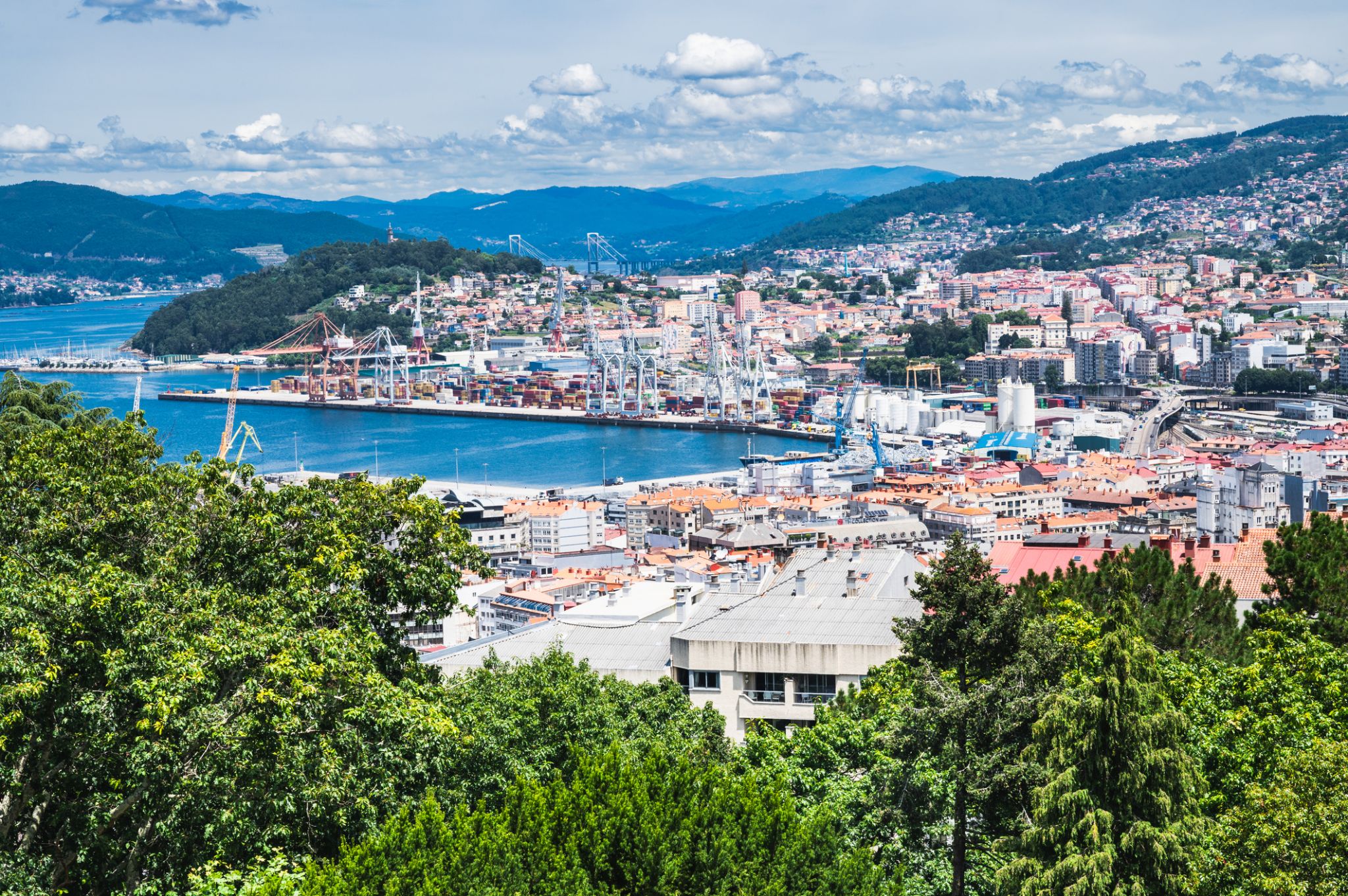
Vigo is a city and municipality adjoining the Atlantic Ocean in the province of Pontevedra in Galicia, northwest Spain. It is the capital of the comarca of Vigo and Vigo metropolitan area.
Vigo is the most populous municipality of Galicia, the 14th in Spain, and the most populous Spanish municipality that is not the capital of a province. It has an area of 109.06 km2 (42.11 sq mi) and had a population of 292,817 in 2016.
The city is located in the southwest of Galicia, in the southern part of Vigo Ria, one of Europe's rainiest areas. In the northeast, it borders the municipality of Redondela; in the east, Mos; in the south, O Porriño and Gondomar; and in the southwest, Nigrán. On the other side of its bay are the municipalities of Cangas and Moaña. They are all part of the southern Galician region called Rías Baixas. Vigo is just north of the border with Portugal; its nearest larger city is Porto, Portugal's second-largest city.
Vigo and its metropolitan area are one of the region's primary economic agents.
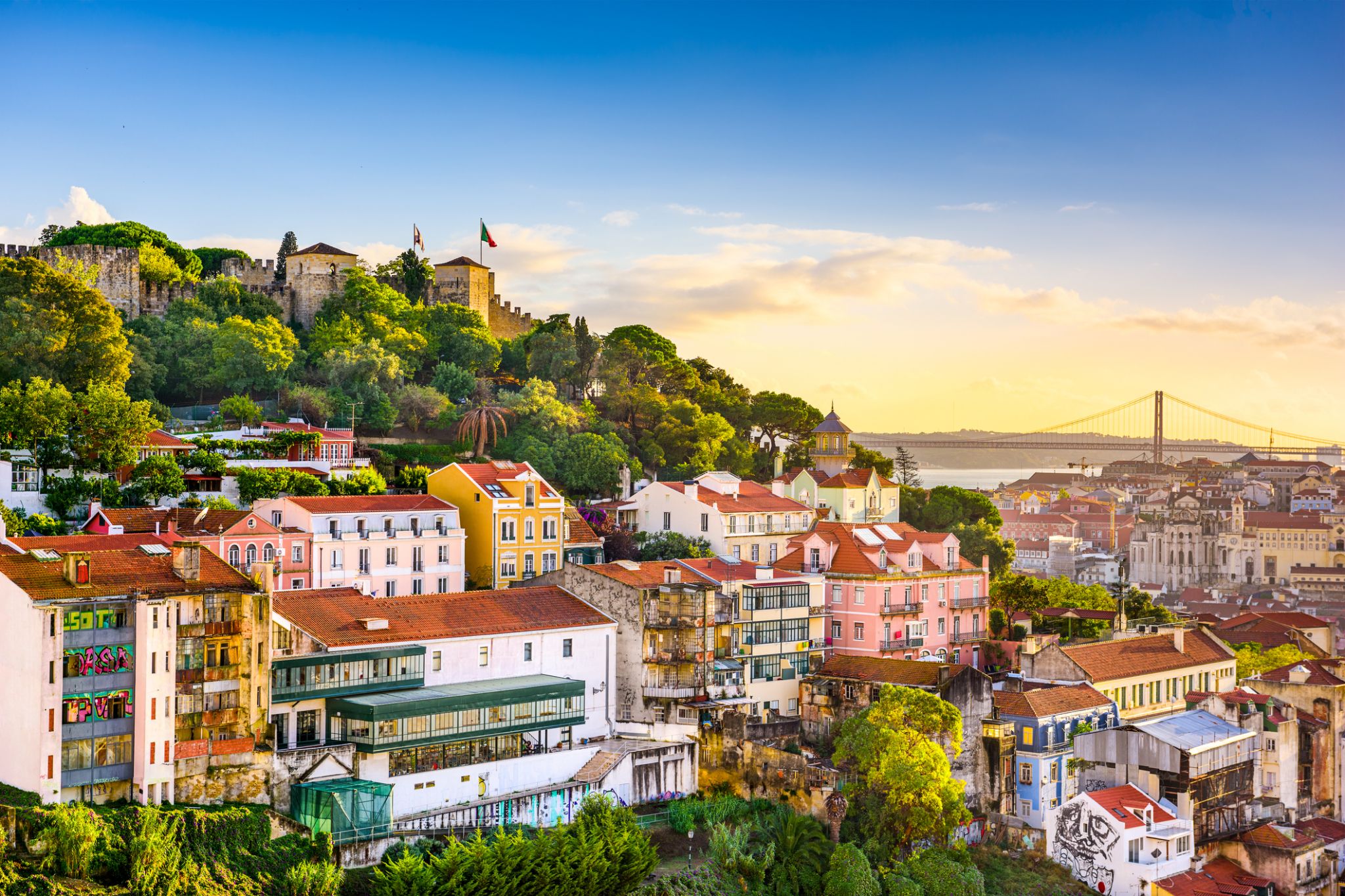
Lizbona jest stolicą i największym miastem Portugalii, z szacowaną populacją 505 526 mieszkańców w granicach administracyjnych na obszarze 100,05 km². Jej obszar miejski rozciąga się poza granice administracyjne miasta i liczy około 2,8 miliona mieszkańców, co czyni go jedenastym najbardziej zaludnionym obszarem miejskim w Unii Europejskiej. Około 3 milionów ludzi mieszka w aglomeracji lizbońskiej (która stanowi około 27% populacji kraju). Jest to najbardziej wysunięta na zachód stolica kontynentalnej Europy i jedyna położona nad Oceanem Atlantyckim. Lizbona leży na zachodnim Półwyspie Iberyjskim nad Oceanem Atlantyckim i rzeką Tag. Najbardziej wysunięte na zachód obszary jej aglomeracji tworzą najbardziej wysunięty na zachód punkt kontynentalnej Europy, znany jako Cabo da Roca, położony w górach Sintra.
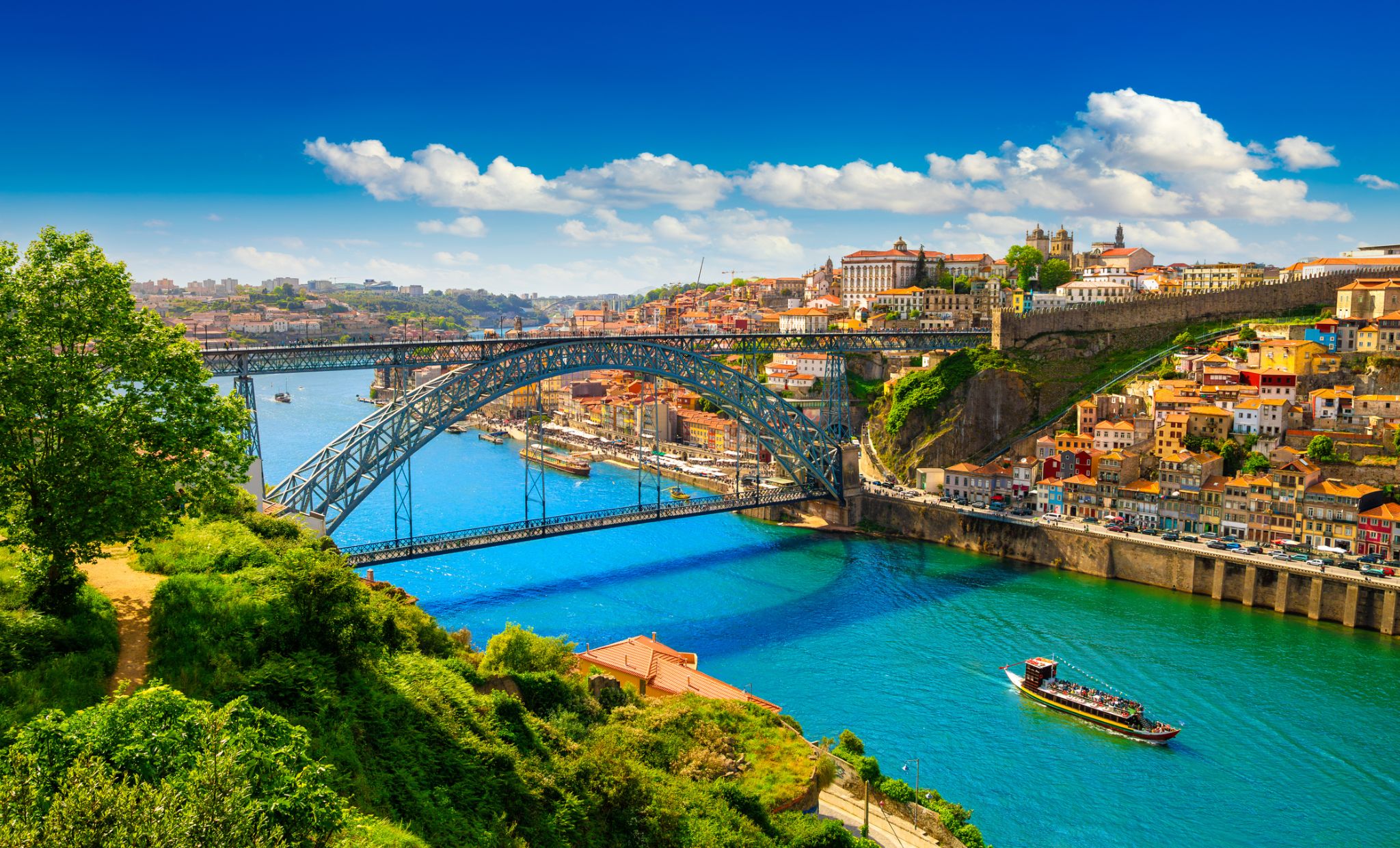
Порту является вторым по величине городом Португалии после Лиссабона и одним из крупных городских районов Пиренейского полуострова. Население самого города составляет 237 591 человек, а в столичном районе Порту, который выходит за административные пределы города, проживает 1,9 миллиона человек (2011 год) на площади 2 395 км2 (925 кв. Миль), что делает его вторым самый большой городской район в Португалии. Он признан глобальным городом гамма-уровня Исследовательской группой по глобализации и глобальным городам (GaWC), единственным португальским городом, кроме Лиссабона, который был признан глобальным городом.
Расположенный вдоль устья реки Дору на севере Португалии, Порту является одним из старейших европейских центров, и его историческое ядро было объявлено ЮНЕСКО объектом Всемирного наследия в 1996 году. Западная часть его городской территории простирается до береговой линии Атлантического океана. Его поселение датируется много веков, когда он был форпостом Римской империи. Его объединенное кельтско-латинское имя, Portus Cale, было названо происхождением названия «Португалия», основанного на транслитерации и устной эволюции от латыни. На португальском языке название города пишется с определенной статьей о Порту ; следовательно, его английское название произошло от неправильного толкования устного произношения и упоминается как Опорто в современной литературе и многими ораторами.
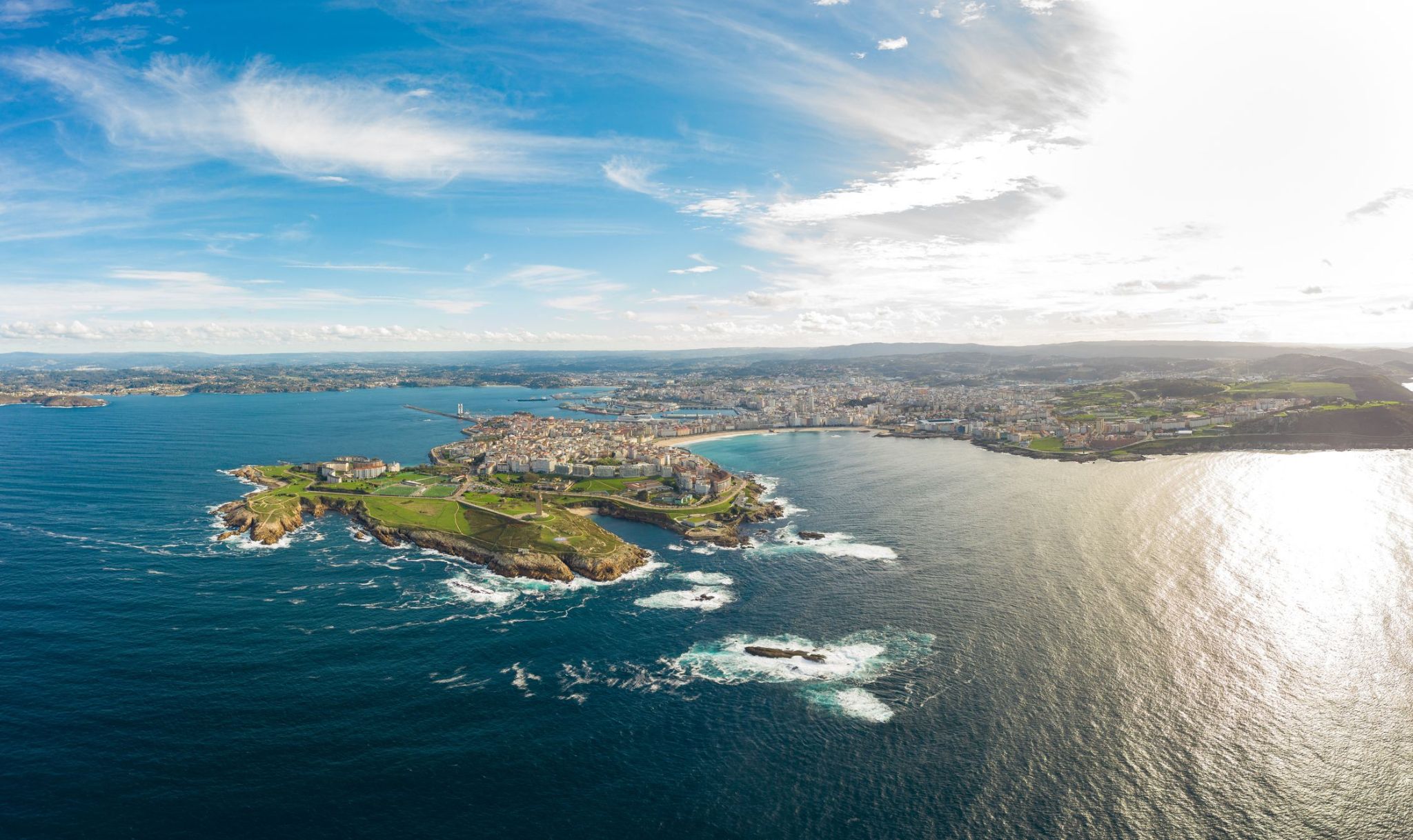
Podróżnicy odnajdują w La Coruña idealne miejsce do poczucia atmosfery atlantyckiego wybrzeża Hiszpanii, gdzie nowoczesne promenady spotykają się z historycznymi zabytkami i przytulnymi plażami. Miasto słynie z najstarszej działającej rzymskiej latarni morskiej na świecie – Wieży Herkulesa, zbudowanej prawie 2000 lat temu, która wciąż wskazuje drogę statkom. Można tu spacerować jedną z najdłuższych promenad w Europie, podziwiając oceaniczne widoki i świeży wiatr.
W La Coruña goście odkrywają bogatą galicyjską kulturę kulinarną z owocami morza, które serwowane są w tradycyjnych barach tapas oraz nowoczesnych restauracjach. Lokalne targi zachwycają świeżymi produktami, a życie kulturalne miasta wypełniają festiwale, wystawy i muzyka na żywo na ulicach. To miejsce oferuje podróżnym unikalne połączenie historycznej głębi, morskich krajobrazów i ciepłej hiszpańskiej atmosfery, pozostawiając po podróży poczucie lekkości i inspiracji.
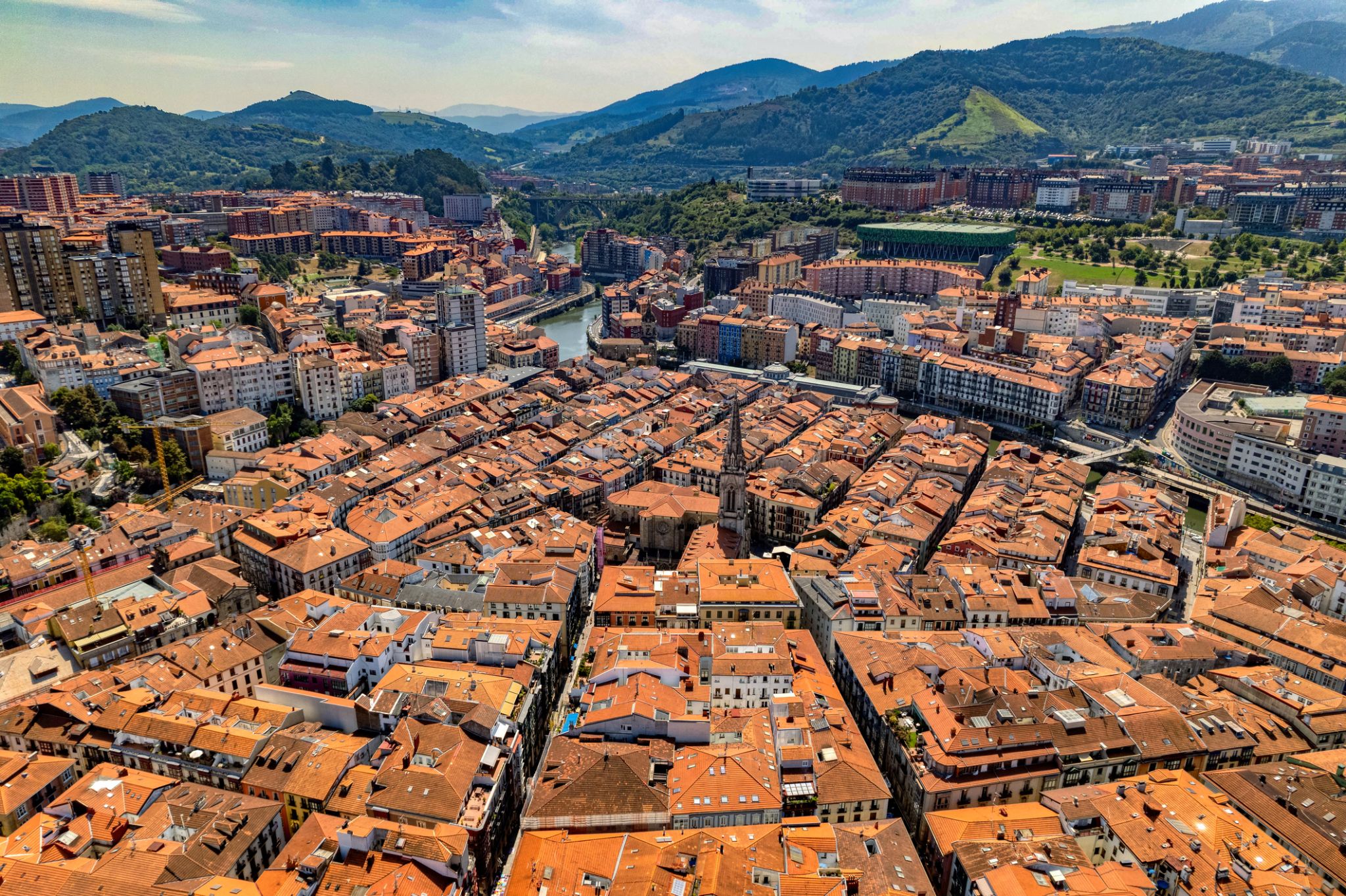
Bilbao is a city in northern Spain, the largest city in the province of Biscay and in the Basque Country as a whole. It is also the largest city proper in northern Spain. Bilbao is the tenth largest city in Spain, with a population of 345,141 as of 2015. The Bilbao metropolitan area has roughly 1 million inhabitants, making it one of the most populous metropolitan areas in northern Spain; with a population of 875,552 the comarca of Greater Bilbao is the fifth-largest urban area in Spain. Bilbao is also the main urban area in what is defined as the Greater Basque region.
Bilbao is situated in the north-central part of Spain, some 16 kilometres (10 mi) south of the Bay of Biscay, where the economic social development is located, where the estuary of Bilbao is formed. Its main urban core is surrounded by two small mountain ranges with an average elevation of 400 metres (1,300 ft). Its climate is shaped by the Bay of Biscay low-pressure systems and mild air, moderating summer temperatures by Iberian standards, with low sunshine and high rainfall. The annual temperature range is low for its latitude.
After its foundation in the early 14th century by Diego López V de Haro, head of the powerful Haro family, Bilbao was a commercial hub of the Basque Country that enjoyed significant importance in Green Spain. This was due to its port activity based on the export of iron extracted from the Biscayan quarries. Throughout the nineteenth century and the beginning of the twentieth, Bilbao experienced heavy industrialisation, making it the centre of the second-most industrialised region of Spain, behind Barcelona. At the same time an extraordinary population explosion prompted the annexation of several adjacent municipalities. Nowadays, Bilbao is a vigorous service city that is experiencing an ongoing social, economic, and aesthetic revitalisation process, started by the iconic Bilbao Guggenheim Museum, and continued by infrastructure investments, such as the airport terminal, the rapid transit system, the tram line, the Azkuna Zentroa, and the currently under development Abandoibarra and Zorrozaurrerenewal projects.
Bilbao is also home to football club Athletic Club de Bilbao, a significant symbol for Basque nationalism due to its promotion of only Basque players and one of the most successful clubs in Spanish football history.
On 19 May 2010, the city of Bilbao was recognised with the Lee Kuan Yew World City Prize, awarded by the city state of Singapore, in collaboration with the Swedish Nobel Academy. Considered the Nobel Prize for urbanism, it was handed out on 29 June 2010. On 7 January 2013, its mayor, Iñaki Azkuna, received the 2012 World Mayor Prize awarded every two years by the British foundation The City Mayors Foundation, in recognition of the urban transformation experienced by the Biscayan capital since the 1990s. On 8 November 2017, Bilbao was chosen the Best European City 2018 at The Urbanism Awards 2018, awarded by the international organisation The Academy of Urbanism.


Southampton is the largest city in the ceremonial county of Hampshire, England. It is 69 miles (111 km) south-west of London and 15 miles (24 km) west north-west of Portsmouth. Southampton is a major port and the closest city to the New Forest. It lies at the northernmost point of Southampton Water at the confluence of the Rivers Test and Itchen, with the River Hamble joining to the south of the urban area. The city, which is a unitary authority, has an estimated population of 253,651. The city's name is sometimes abbreviated in writing to "So'ton" or "Soton", and a resident of Southampton is called a Sotonian.
Significant employers in the city include Southampton City Council, the University of Southampton, Solent University, Southampton Airport, Ordnance Survey, BBC South, the NHS, ABP and Carnival UK. Southampton is noted for its association with the RMS Titanic, the Spitfire and more generally in the World War II narrative as one of the departure points for D-Day, and more recently as the home port of a number of the largest cruise ships in the world. Southampton has a large shopping centre and retail park, Westquay. In 2014, the city council approved a neighbouring followup Westquay South which opened in 2016–2017.
In the 2001 census Southampton and Portsmouth were recorded as being parts of separate urban areas; however by the time of the 2011 census they had merged apolitically to become the sixth-largest built-up area in England with a population of 855,569. This built-up area is part of the metropolitan area known as South Hampshire, which is also known as Solent City, particularly in the media when discussing local governance organisational changes. With a population of over 1.5 million this makes the region one of the United Kingdom's most populous metropolitan areas.